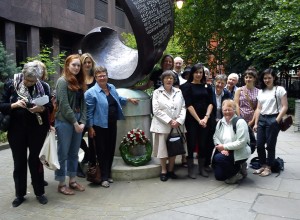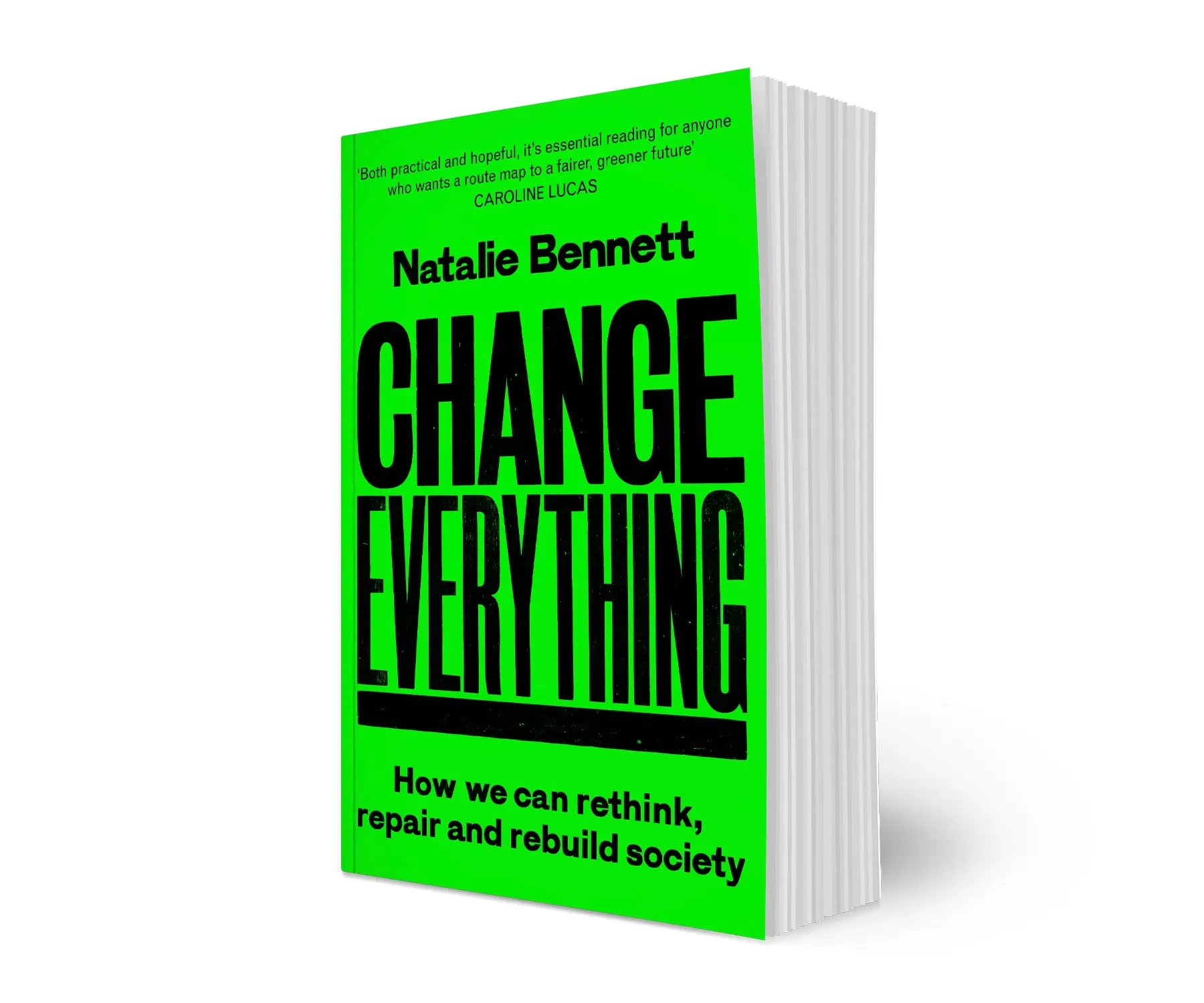(A shorter version of this article was published on Blogcritics)
It’s all too obvious now that in many ways developed societies have lost their way. Climate change, economic crisis, huge inequality of which part is misery for some and fearful uncertainty for many more, many hundreds of millions going hungry while obesity is cutting lifespans in a growing number of cases – economies clearly did not, as Keynes and others thought after the Second World War they would, reach a state of sensible material sufficiency, then look to improve quality of life rather than quantity of stuff.
So where did it all go so horribly wrong? Ian Roberts (writing with Phil Edwards) in The Energy Glut: The Politics of Fatness in an Overheating World has at least part of the answer. He ties together the building of societies and economies around the needs of fossil-fuel powered transport to the rise in obesity and removal of almost all physical activity from many Western individuals’ lives, combined with a huge toll or death and injury on developing, and developed, countries’ roads, and the rise of the supermarkets and foods rich in calories and low in nutrients. He’s very firm that obesity is not an individual problem – simply a reflection of the fact that all of us have got steadily fatter, which has of course pushed the upper end of the distribution curve well into “obese”.
It’s a book that contains many shocking statistics.
* Globally road crashes kill 1,000 children a day and disable many times more. And that’s simply “accidents” – there’s also the cardiac and respiratory diseases road pollution causes, and of course climate change.
* The WHO reports that expenses arising from road injuries cost poor countries around 2% of GDP – nearly $100bn, twice what they receive in aid.
* In England and Wales there were 205 road deaths of children pedestrians between 2001 and 2003 – and children from the lowest social group were five times more likely to die than the highest (which the authors say is simply because the dangers of the roads have driven everyone who can afford it into a car – every step of which of course makes the roads more dangerous).
* In the UK between 1975 and 2003 average miles walked per person fell from 255 to 192; cycled from 51 to 34 (and the authors say these figures would already have dropped hugely from only a couple of decades earlier). (p. 39)
* Shopping accounts for about 20% of car journeys in the UK. (p. 56)
* America’s “security costs” for “defending” petroleum supplies from the Middle East are estimated at between $100 billion and $200bn annually.
* In 1932 General Motor bought up America’s tram system in order to shut it down.
* The overall risk of death from all causes among people who cycle to work is between 10 and 30% lower than for those who drive to work (p. 108)
* English composer Sir Edward Elgar took up cycling in his 40s and cycled up to 40 miles a day around the lanes of Herefordshire (used as a sign of how readily people took on distances considered almost heroic today) (p. 111)
So what to do? One clear action in the developed world is that we need to start to cut away at the social dominance of the supermarket (and for the sake of our farmers there are plenty of other reasons for doing this), and their car-demanding, car-encouraging and obesity-encouraging system.
The authors report that in the UK supermarkets account for 93% of food spending and (as of 2007 and growing fast) 41% of fuel sales. And more than three quarters of British households do their main food shopping by car. “Supermarkets sell energy, either as food or petrol. … as people move less, all things being equal, they tend to eat less. .. we could think of supermarkets as simply the retail arm of the petro-nutritional complex. Supermarkets don’t care how they make profits, whether by selling us food or petrol, but either way it makes us fat…[and] fat populations consume considerably more food than lean populations. It has been estimated that the amount of food energy consumed by a ‘fat’ population (average BMI 29) is around 20 per cent more than that consumed by a ‘normal’ weight population (average BMI 25). The heavier our bodies become, the harder and more unpleasant it is to move about in them and the more dependent we become on our cars” (p. 55-6)
And there’s been a huge change in the balance of food types. Not only has food, relative to other expenses, never been cheaper, (UK household spending percentage has fallen from 20% in 1970 to 10% in 2002), but it is energy-dense, fats and sugars, that have fallen most, while fruit, vegetables and grain have fallen much less. And sugary drinks have fallen in price most of all, and now more than three-quarters of school children drink at least one fizzy drink a day (unsurprising when they see on average 10 food industry adverts per hour of TV). “North American children are drowning in liquid calories. And the rest of the world is jumping to join them Coca-Cola boasts 1.5 billion consumer servings a day.” (p. 59)
Another action needed is to stop the subsidising of the motor and associated industries. As the authors say: “Although most of the world’s population will never own a car, road building is invariably funded by public funds, in rich and poor countries alike. Road transportation is 95% oil-dependent, and ensuing a steady supply of cheap oil also involves massive public expenditure. Then there is the automobile industry…(with huge subsidies and bailouts).” (p. 68)
It’s here that the book is likely to be most controversial, even among those likely to broadly back its conclusions. It says that there’s no evidence to show that roads encourage economic development, while noting that congestion hampers economic output and the poor bear the majority of the negative costs of road building. (p. 73) The only real benefit lies, the authors say, is in profits for big, often foreign, companies. What Africa (with which it is chiefly concerned in this context) needs is not fancy roads for cars, but simple solid paths for bicycles – and the bicycles to use on them.
And it’s also clear we need to curb the lobbying power and influence of the motor industry. Roberts tells the astonishing tale of the Federation Internationale de l’Automobile’s Commission for Global Road Safety, which has an industry members — oils, tyres and car making among their origins — and as patron Prince Michael of Kent, former racing driver and member of the British Racing Drivers Club. It’s keen on pedestrian education, Roberts says, decide decades of research showing this to be wholly ineffective, as well as sending the message that “road space belongs to drivers and pedestrians and cyclists must look out or die”. (p. 83) Driver training too, has a negative impact on safety (p. 124).
But above all, the message that Roberts wants to deliver is that we need to go back to bicycle and walking as the primary form of individual transport (while also improving mass transit systems). The arguments are on both climate change/environmental and health grounds.
First health: “Take a 50-year-old office worker who drives 4.5km to work every day, a distance that is easily manageable by bicycle. If he switches from driving to cycling for 90% of these trips, at the end of the first year he could have shed up to 5 kilos of adipose tissue and will enjoy a 20 to 40% reduction in the risk of premature death and a 30% reduction in the risk of type 2 diabetes. He will also have better mental health and improved fitness.” (p. 108) (And if you think it will take longer, note that the average car speed in London is 11kph – for bicycles it is 10kph – p. 110)
But conversely, in the developing world, cycles (rather than walking) would reduce calorie consumption and thus improve health: “The lion’s share of transport in Africa is in rural areas, on unpaved paths and tracks, carrying crops from the fields to the villages…. (70-80% by women) carrying headloads of crops, typically weighing 30kg or more over an average distance of about 5km… A 2m-wide unpaved bike trail would cost less than 10% of the cost of a 6m-wide rural road for motor vehicle use…. One study in the Makete District of Tanzania found that, whereas building a feeder road saved households 120 hours per year, investing in a bicycle saved the family 200 hours a year…. a ‘before and after study’ of subsidised bicycle provision in Uganda found a range of beneficial effects, including more frequent trips to market and health-care facilities and increased household income.” (p. 104)
Second, there’s the argument of quality of life. Cars and trucks destroy community life, removing people (particularly children) from the streets. And above all, there’s climate change – cars simply cannot continue to rule.
This is a book every council planner, every councillor, should read. It’s not without faults. The writing has a hasty feel, as does the editing – it sometimes harms its argument by quoting different figures for the same facts in different places and is extremely uneven in its treatment of units of measure; some parts of the text appear to fit rather awkwardly with the rest (no doubt cooperative writing isn’t easy). Nevertheless, I can pretty much guarantee that if you read this, there’ll be at least one gripping fact you’ll continue to quote for years to come.



 About
About